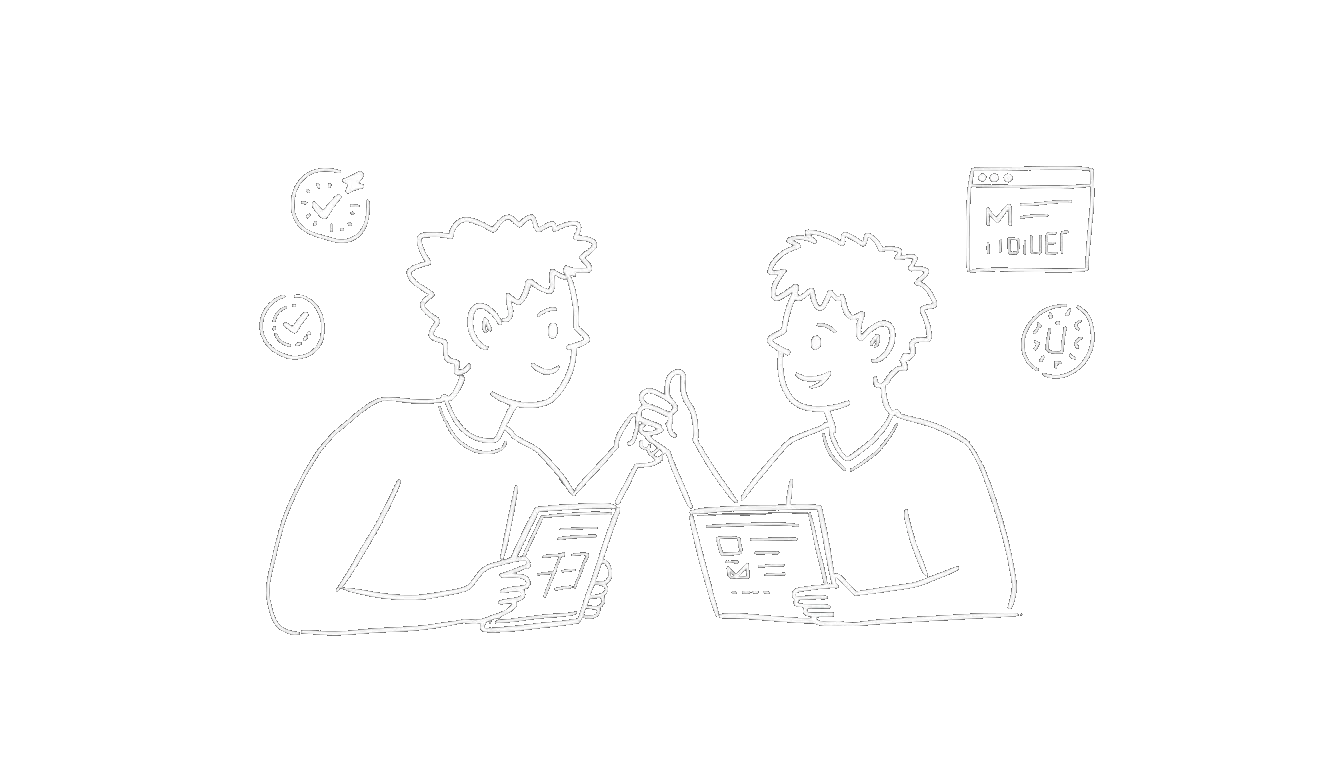How to Build Your Motivation Bridge: 3 Science-Backed Tips for ADHD
Lia Borges
@liocas

If you have ADHD, you've probably heard it before: "You're just being lazy." But here's the truth—it's not laziness. It's a missing motivation bridge.
Understanding the Motivation Bridge
Think of motivation as a bridge made of wooden planks. Each plank represents a reason to do something: "I promised someone," "It's good for me," "It's my dream," or "There's a deadline." For most people, even if a few planks are missing, they can still cross the bridge because enough planks remain.
For people with ADHD, more planks are missing by default. The bridge looks shakier, harder to cross, sometimes impossible. This isn't a character flaw—it's how ADHD brains are wired.
ADHD brains struggle with tasks that are lengthy, repetitive, or boring. But they thrive on things that are urgent, novel, or personally interesting. In other words, ADHD brains need extra stimulation to make that bridge crossable. The good news? You can add those missing planks yourself.
Tip 1: Make It Urgent (Add the Accountability Plank)
Creating artificial deadlines sounds great in theory, but here's the problem: if you know it's artificial, you'll probably procrastinate anyway. The solution? External accountability.
When someone else is waiting on you, urgency becomes real. Ask a teacher for chapter-by-chapter deadlines instead of one final due date. Meet with a colleague weekly to check in on project progress. Want to clean your house? Invite someone over.
How tracking.so helps: The app's social accountability features are specifically designed for this. You can share your progress with friends, post photo updates of your work, and see when your friends are checking in on their goals. Knowing that others can see your progress (or lack thereof) creates real urgency—not the artificial kind that's easy to ignore. Plus, with shared plans for groups, you and your accountability partner can track goals together with exclusive interpersonal statistics, making it easy to keep each other motivated.
The app also sends smart reminders that adapt to your routine, and the AI coach proactively reaches out to keep you on track—like having an accountability buddy who never gets tired of checking in.

Tip 2: Make It Novel (Add the Stimulation Plank)
You can't always do new things, but you can do things in new ways. Do homework in a café instead of your desk. Try a new route to work. Challenge yourself to fold laundry faster than last time. For ADHD brains, even small environmental or procedural changes can provide the novelty needed to engage.
Gamification works particularly well here—it transforms repetitive tasks into something that feels new each time.
How tracking.so helps: The app turns habit-building into a game. You earn achievement badges for consistency (habit badges), helping friends (supporter badges), and reaching milestones (lifestyle badges). Watching your streaks grow creates a visual representation of progress that feels rewarding and engaging.
The social feed also adds novelty—you're not just tracking your own habits in isolation. You see what your friends are accomplishing, upload photos of your progress, and interact with each other's achievements. Every time you open the app, there's something new happening, which keeps your ADHD brain engaged.

Tip 3: Make It Personally Interesting (Add the Reward Plank)
ADHD brains are interest-based learners. Reading a book you're excited about versus one assigned by a teacher can be the difference between finishing it in two days or never picking it up. The same principle applies to any task.
When you can't make a task inherently interesting, immediate rewards become crucial. Here's why: ADHD brains experience time differently. Long-term rewards feel impossibly far away. But immediate feedback—a sticker, a badge, verbal acknowledgement—shortens the distance between behavior and reward, making the task actually doable.
How tracking.so helps: The app is built around immediate feedback. Every time you check off a habit, you build your streak. Hit milestones? You unlock badges. The visual satisfaction is instant, not months away.
The mood and energy tracking feature also helps you discover which habits genuinely make you feel better, creating personal interest based on data. When you can see that morning walks correlate with better productivity or that certain routines boost your mood, suddenly those habits become interesting because they're yours—customized to your patterns.
For premium users, the AI coach provides personalized motivation and insights based on your unique patterns, making every interaction feel relevant to your specific interests and needs. The data-driven insights automatically generate correlations between your mood, energy, productivity, and routines—revealing connections you might have missed. When you understand why something works for you, it becomes infinitely more interesting.

Cross Your Bridge
Every feature in tracking.so is designed to add planks to your motivation bridge: urgency through social accountability, novelty through gamification, and personal interest through immediate rewards and data-driven insights. Instead of fighting your ADHD brain, you're working with it.
Your motivation bridge doesn't have to be perfect to be crossable. It just needs enough planks. And with the right tools, you can build them.
Ready to start building your bridge? Try tracking.so for free and discover what works for your ADHD brain.
